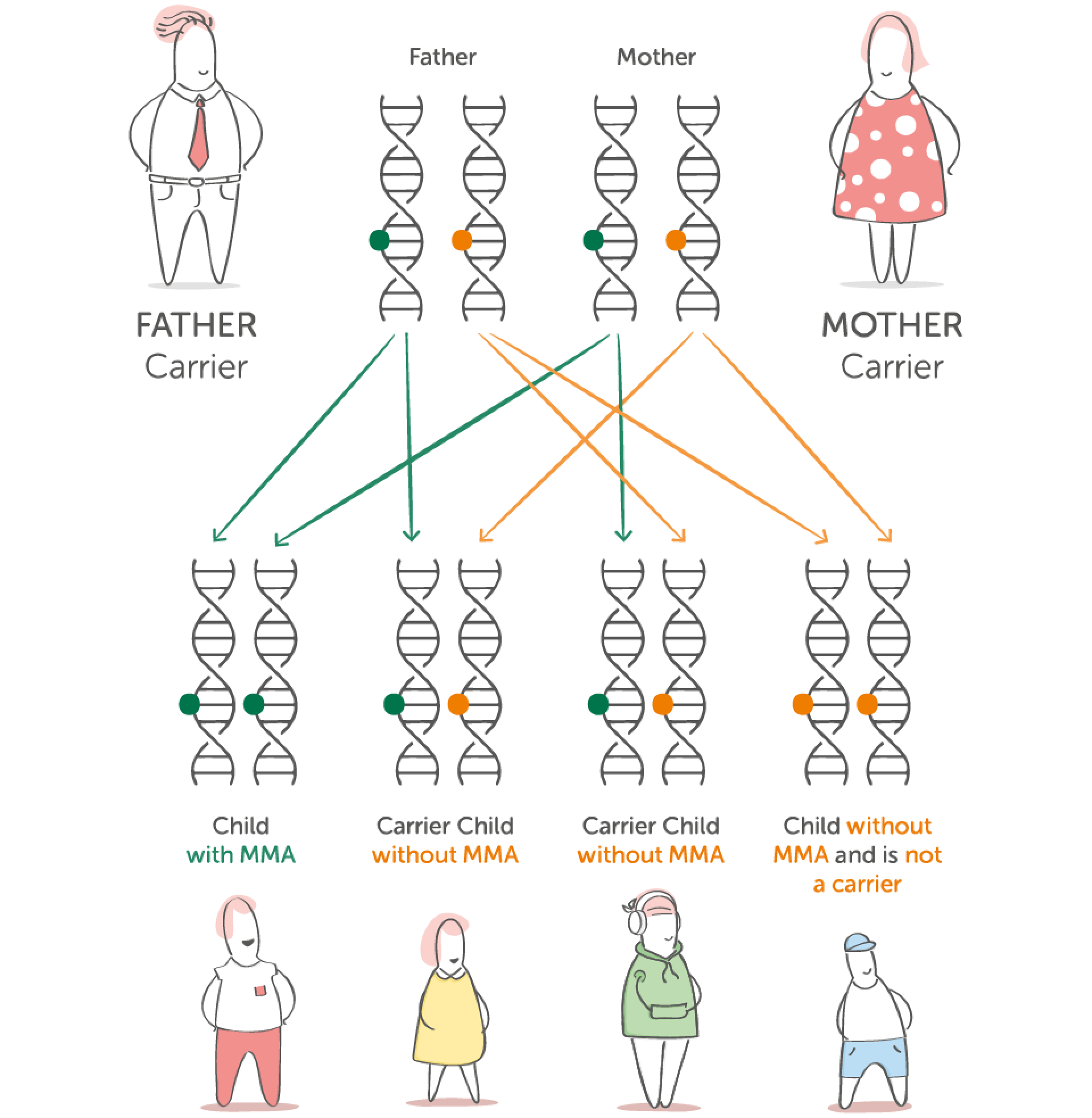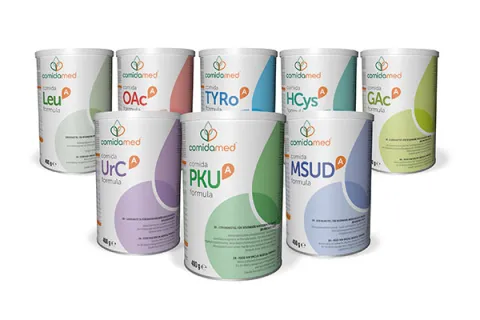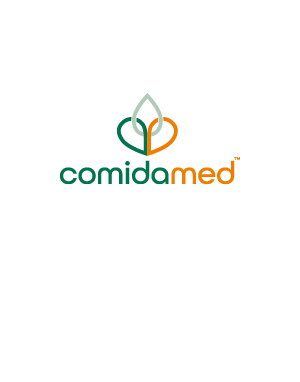An introduction to the Organic Acidaemia: Methylmalonic Acidaemia (MMA)
An introduction to the Organic Acidaemia; methylmalonic acidaemia (MMA) following the diagnosis of
your child with this condition.
This is an introduction to the Organic Acidaemia; methylmalonic acidaemia (MMA) following the diagnosis of your child with this condition.
Consult your metabolic team for diagnosis and treatment for MMA.
This page is not designed to replace any advice given by the metabolic team at the hospital.
If you are unclear about anything on this page, please ask your dietitian for further information.
This was written with Prof Anita MacDonald who is a metabolic dietitian from Birmingham Children’s Hospital, who has over 40 years of experience working with parents/carers and children with MMA.
What is MMA?
Methylmalonic Acidaemia or MMA for short.
It is pronounced me-thyle-mal-onic-acid-ee-me-ah.
If left untreated, chemicals in the blood build up to toxic levels.
This can cause several problems:
- It can damage the brain and kidneys.
- It may cause delays in normal development like walking and talking.
Other symptoms:
- Poor feeding
- Vomiting
- Dehydration
- Floppy infant
- Excessively sleepy
- Rapid breathing
- Seizures
MMA can be life threatening if left unmanaged.
There are 2 main forms of MMA:
B12 responsive MMA
This can be managed by injections of vitamin B12 and may not need to follow a special diet.
B12 non-responsive MMA
This form does not respond to large doses of B12 and is managed by following a protein restricted diet alongside medication.
This page will explain the management of B12 non-responsive MMA.
Diagnosis of MMA
High levels of a chemical called methylmalonic acid and other chemicals are found in the blood and urine.
Once diagnosed a child will be referred to a specialist metabolic centre to ensure they receive the care they need.
In newborns diagnosed with MMA, if managed early and effectively they can have a good quality of life.
Why does my child have MMA?
MMA is an inherited genetic condition
It’s nobody’s fault and there is nothing you could have done to prevent it.
As a parent of a child with MMA, you have one MMA gene and one unaffected gene. This is known as being a carrier.
For a child to inherit MMA, it requires both parents to be carriers of the MMA gene.
Your child has inherited 2 MMA genes, one from the father and one from the mother and so therefore has MMA.
There are a small number of people who are carriers of the MMA gene
People who are carriers for MMA do not have MMA themselves and in fact do not normally know they are carriers. The MMA gene does not cause a problem to them.
When 2 people who are carriers of the MMA gene conceive a child there is a 1 in 4 chance of that child having MMA.

The science bit... Protein explained
Why do we need protein?
Protein is one of the nutrients needed by the body.
It helps to build, repair and maintain body cells and tissues, like your skin, muscles, organs, blood and even bones.
Protein is made up of different building blocks called amino acids.
When it is eaten it is broken down into these amino acids so they can be absorbed into the blood stream and travel to where they are needed.
The conversion of protein into amino acids
Enzymes are special proteins which are like chemical scissors needed for the breakdown of protein into amino acids. There are 20 amino acids (building blocks) that make up protein.
Protein
Enzymes
Amino acids (Building Blocks)
Methionine, threonine, valine and isoleucine are 4 of these amino acids and are used by the body to make new chemicals.
It is these four amino acids that a person with MMA cannot process correctly.
Why can someone with MMA not process methionine, threonine, valine and isoleucine correctly?
A person without MMA
Methionine, threonine, valine and isoleucine
Methylmalonyl-CoA mutase enzyme
Energy + growth + repair
In a person without MMA some of the methionine, threonine, valine and isoleucine are broken down further to make methylmalonic acid and other chemicals.
Normally the liver produces an enzyme called methylmalonyl-CoA mutase which is used to convert methylmalonic acid to energy, which is used for growth and repair.
A person with MMA
Methionine, threonine, valine and isoleucine
Faulty/no methylmalonyl-CoA mutase enzyme
Buildup of methylmalonic acid and other harmful chemicals
In MMA the methylmalonyl-CoA mutase enzyme is either not made by the liver or it does not work properly.
This causes methylmalonic acid and other harmful chemicals to build up and can damage the brain, kidneys and other organs.
Other sources of methylmalonic acid
The management of MMA aims to reduce the build up of methylmalonc acid and other harmful chemicals from all sources.
Methylmalonic acid also comes from:
- The breakdown of fatty acids - the body will use these for energy when it has gone a long time without food
- Gut bacteria
Management of MMA…
- A protein restricted diet
- Avoid prolonged periods of fasting
- A generous fluid intake
- Medications – such as Carnitine
- An Emergency Regimen during illness
Diet Management
A typical diet has too much protein and therefore methionine, threonine, valine and isoleucine for a person with MMA.
In MMA, it is important that enough protein is given for growth and development, but not too much as harmful chemicals will be made.
Therefore they must follow a protein restricted diet.
The diet will typically be made up of:
- Half - foods very low in protein
The remaining:
- Third - dairy based protein (i.e. yoghurt, cheese and milk)
- Third - cereal based protein (i.e. cereals and rice)
- Third - plant based protein (i.e. peas, sweetcorn and potatoes)
Measured amounts of protein
Your dietitian will advise you how much protein your child will tolerate.
This will depend on the severity of the condition.
These foods need to be measured and taken everyday.
They will mainly come from dairy, cereal and plant based foods.
Your dietitian will teach you how to measure protein.
They will provide you with a list of foods suitable for your child.
Low protein foods
Most fruit and vegetables such as, peppers, grapes, carrots and tomatoes can be eaten freely.
These foods should make up the majority of your child’s diet.
They provide an important source of energy and variety in the diet.
Your dietitian will provide you with a list of foods suitable for your child.
Ensure a sufficient energy supply
This is essential because if the body goes without food for too long there may be a shortage of energy supply.
This causes the body to breakdown protein and will cause the build up of methylmalonic acid and other harmful chemicals – this must be avoided.
Avoid prolonged periods of fasting.
Tube feeding may be necessary to give regular feeds.
This will ensure energy, nutrient and fluid needs are met and can help
to reduce the production of harmful chemicals.
This will be discussed in more detail with your dietitian.
What is a protein substitute?
Why does a person with MMA need to take a protein substitute?
Due to the protein restricted diet, some individuals may be unable to get all the nutrients they need by food alone. They may need to take a protein substitute*.
A protein substitute is a specially made medical supplement. It is methionine, threonine and valine free and has low levels of isoleucine, but it contains all the other amino acids in protein that your child needs to grow and develop.
Most protein substitutes also contain vitamins, minerals and other important nutrients to ensure your child is getting what they need.
If your child requires a protein substitute, your dietitian will discuss this with you in more detail.
* Protein substitutes designed for the dietary management of MMA are Foods for Special Medical Purposes which must be used under medical supervision.
Management during illness
Emergency Regimen (ER)
As with all infants and children, illness will occur from time to time.
However, those with MMA will need to start a special feed called the emergency regimen (ER) as soon as illness starts. Do not delay.
The ER is made up of a glucose polymer.
Your child’s metabolic team will provide an emergency regimen specific for your child and will teach you in advance about what to do in times of illness.
This is an extremely important aspect of dietary management.
When your child gets ill, contact your child’s metabolic team immediately and keep in regular contact with them.
If symptoms continue and/or you are worried, go to the hospital immediately.
An ER can help minimise the impact of illness on your child. Any common childhood illness or infection can cause methylmalonic acid levels to rise - avoidance of this is essential.
If left untreated, it can become life threatening.
The ER supplies energy to prevent a buildup of these harmful chemicals.
Always make sure you have your ER products and a written emergency plan - check that the products are in date.
During illness – start the ER promptly – do not delay
- Stop all protein in food and drink temporarily
- Always complete the full amount of the emergency feed
- Continue on medication as directed by your doctor
- Maintaining your infant’s fluid intake during illness is important and extra fluid may be necessary
- Keep in regular contact with your metabolic team
How will I feed my newborn?
Feeding your infant
Your infant may be given a special methionine, threonine, valine and isoleucine free formula and a protein free formula alongside breast milk / standard infant formula.
You will be advised by the dietitian on how much of each to give.
Your dietitian will go through this with you in more detail.
Breastfeeding offers many benefits for infant and mother, it is recommended you discuss this with your healthcare professional.
Introducing complementary feeding to your infant
When to start introducing complementary feeding**
Complementary feeding is often referred to as weaning. It is the process of gradually introducing solid foods into your infant’s diet. Your dietitian will advise you when to start solid foods, but it will occur around the same time as infants without MMA.
First foods introduced will initially be low protein foods.
This will help your infant to develop a healthy eating pattern while eating a variety of foods.
Your infant needs to continue to take their methionine, threonine, valine free low isoleucine, protein free formula and breast milk / standard infant formula as advised by their dietitian.
** Weaning may occur a little earlier than 6 months, depending on your infant, but it should never be started before 17 weeks.
7 to 12 months
Once your infant is accepting low protein foods, foods containing measured amounts of protein are introduced.
Over time, your child will get more of their protein from food (e.g. cereal) and replace the protein they were getting from breast milk or standard infant formula.
Your child will also be encouraged to move to more textured food and finger foods to encourage self-feeding. Your infant will also begin to drink from a beaker.
Your dietitian will provide more detail about introducing complementary feeding.
Monitoring
You and your child will need to attend your specialist metabolic centre to meet with the metabolic team for ongoing monitoring and check-ups.
At your child’s monitoring visits, the team will spend time with you to ensure your child’s condition is being well managed and tailored to best suit the needs of your child and family.
To do this they look at many different factors such as:
- Your child’s overall health, growth and well-being.
- Blood tests - blood results give a good indication on how well your child is doing.
- Your child’s nutritional intake - it is helpful to bring diet diaries to your clinic visits.
Your dietitian and doctor will discuss any changes that may be needed to your child’s diet or medication.
It is very important to attend these monitoring visits. They will also give you opportunities to discuss concerns or questions you might have.
As your child grows up
Children / Teenagers / Adults
Following the prescribed diet, medication and acting quickly at times of illness ensures the best chance of improving long term outcome.
Download to read offline
Want to read this information offline? A illustrated version of this pages is ready for you to download and keep.
Browse other topics
Discover more from the comidamed world:



